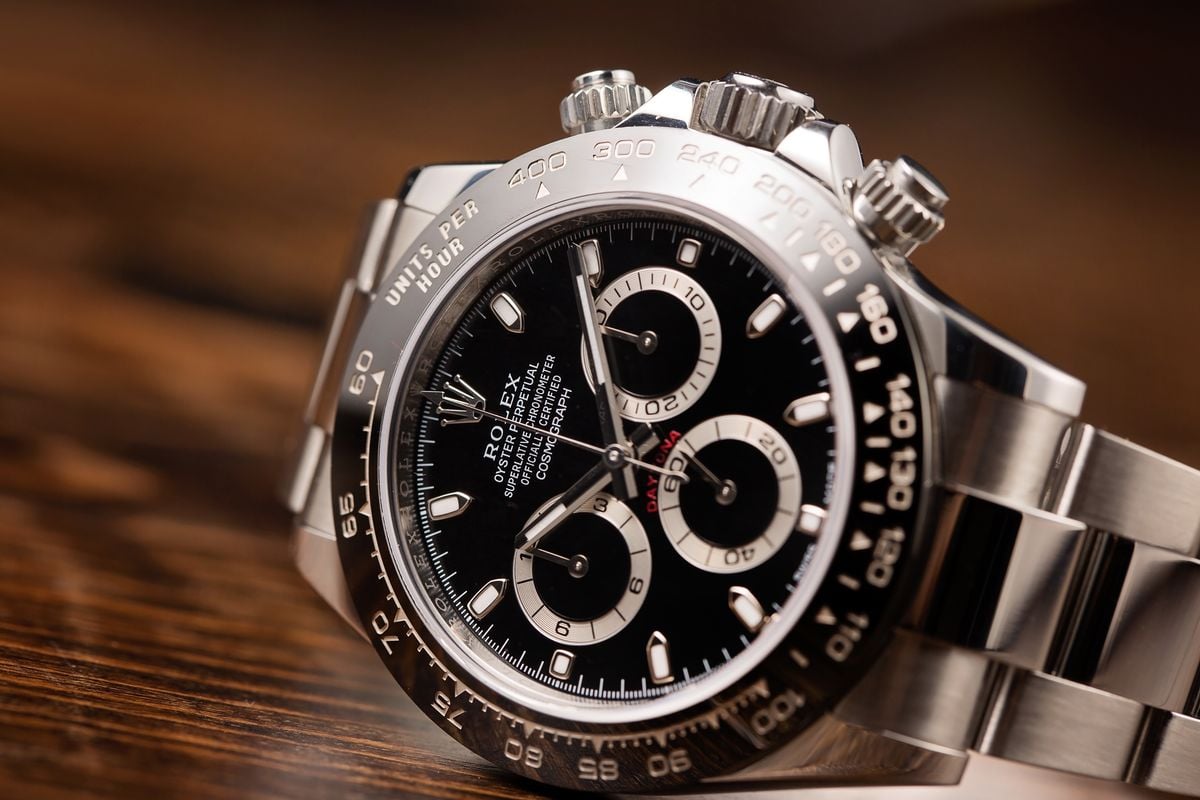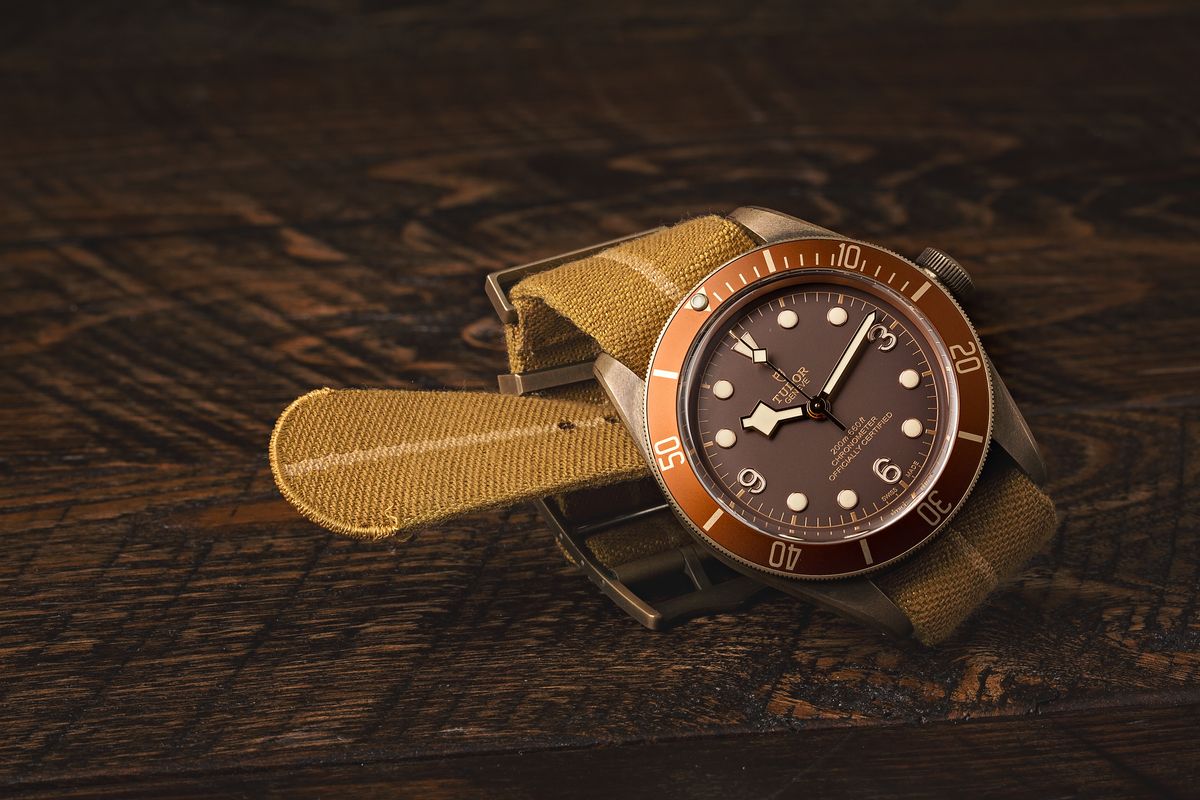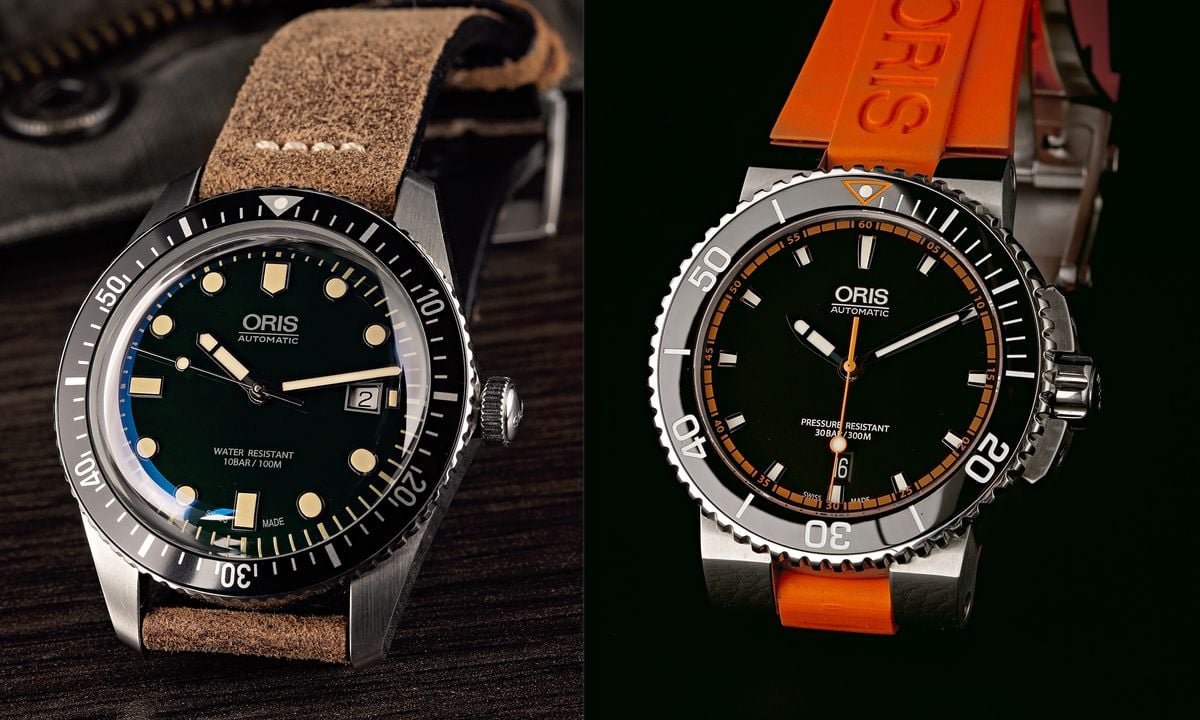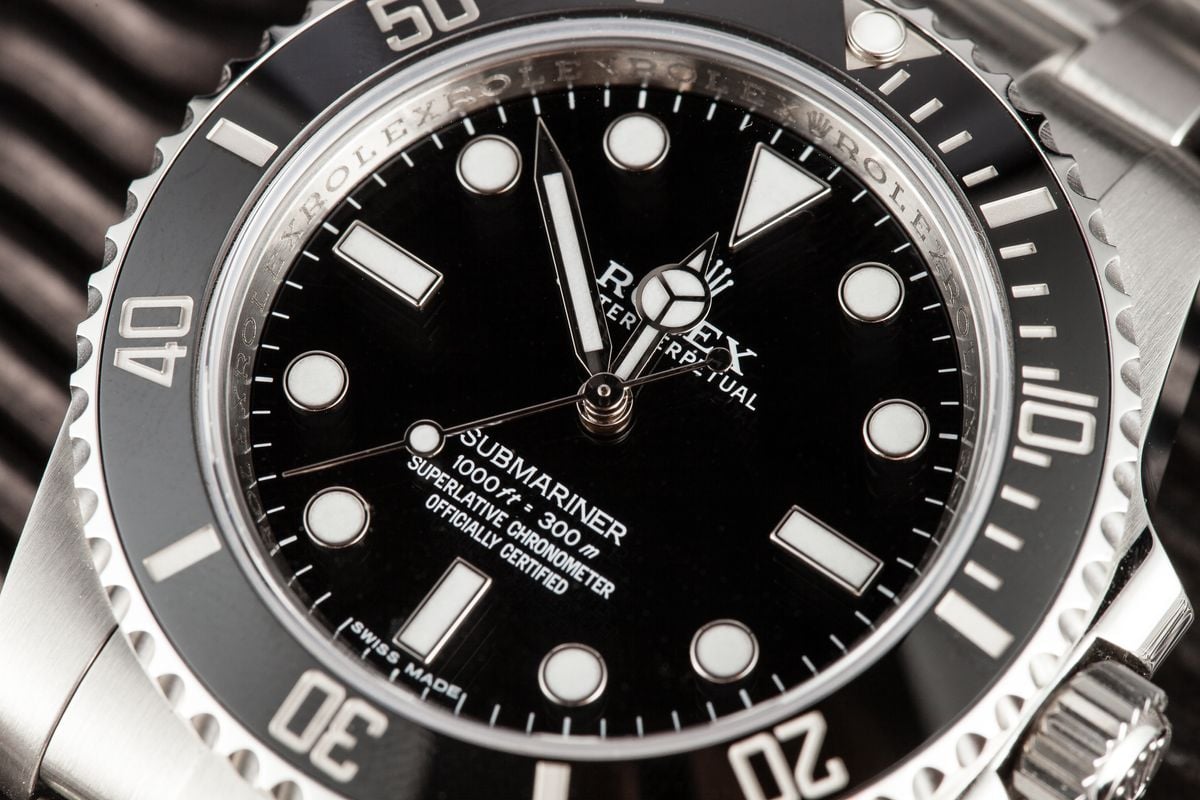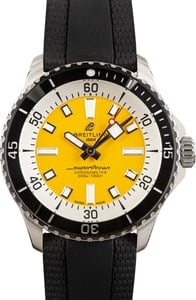For this installment of our Then and Now series, we take a look at perhaps the biggest rags to riches story that horology has to offer. The Rolex Daytona could not have had a more dramatic about-face between the original and the present-day model – not so much in their styling or mechanics, but in their popularity.
The watch that is essentially impossible to buy at retailers today was once so shunned that dealers practically gave them away to anyone who showed the slightest interest. Over more than half a century in the field, the Rolex Daytona has evolved and the public’s perception of the watch has transformed completely. Today, the Daytona is considered to be one of the most important sports watches ever made. So, how did we get here from such inauspicious beginnings?
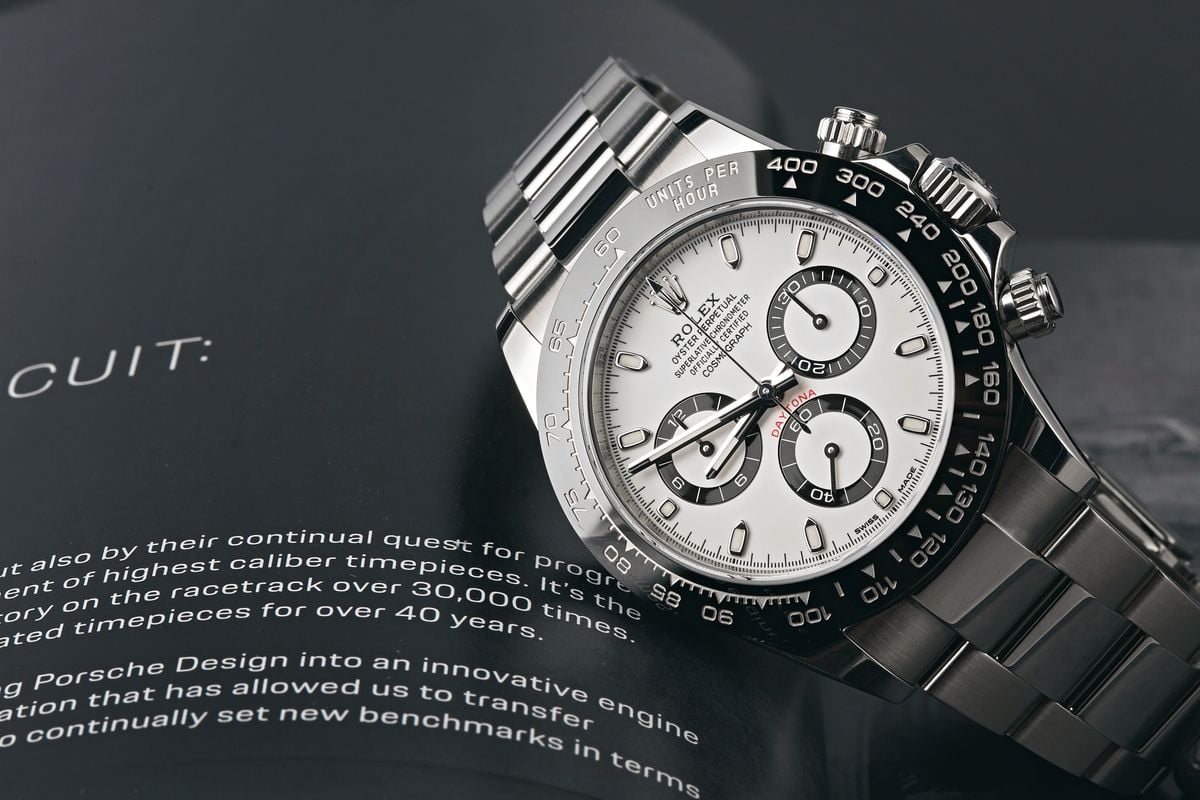
The First Rolex Daytona
The very first Rolex Daytona wasn’t actually called a Daytona at all. Although Rolex had taken a few tentative steps towards producing chronograph wristwatches since the 1930s, it would take until 1963 before the Daytona as we know today it would begin to take its iconic form.
The early pieces of that inaugural reference, the ref. 6239, were called simply the Rolex Cosmograph. Rumors surround the origin of the name, with some speculating it was chosen as a means to catch NASA’s eye, and perhaps be chosen to play a part in the burgeoning space race – a gig it eventually lost out on to the Omega Speedmaster. It would take several more years before it adopted the Daytona title as well, christened after the fabled Floridia speedway and the endurance race that is hosted there, which would soon become a Rolex sponsored event.
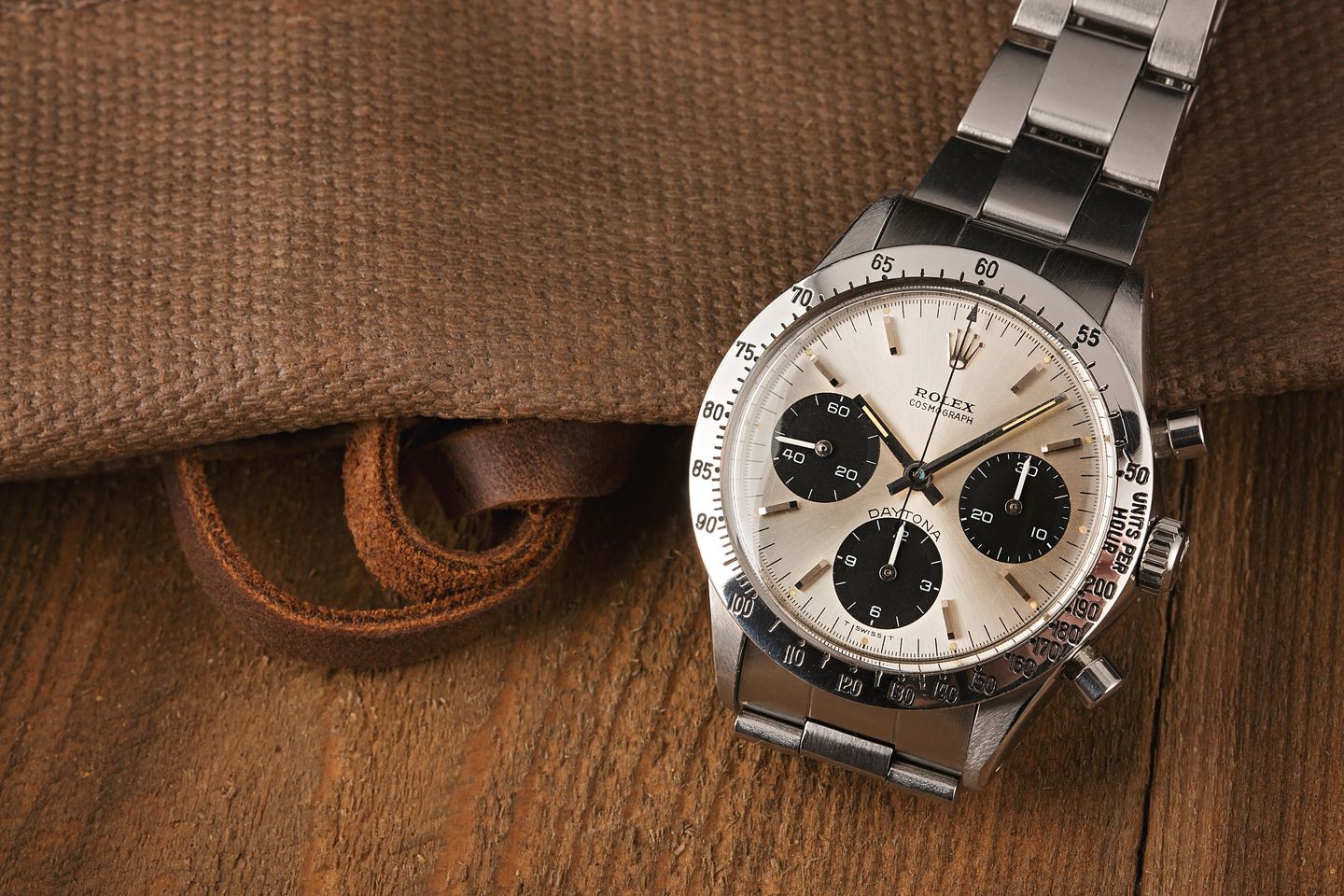
In fact, from print advertisements during this period, we can see that the watch was a hair away from being called the Le Mans, after the celebrated French circuit; however it was obviously changed to appeal more to a North American audience. Except, it didn’t quite work out like that. The ref. 6239, handsome enough though it was, was met with a huge wave of indifference upon its launch.
Initially forged in all steel, the 37mm piece took a leaf out of Omega’s book and moved its tachymeter scale onto the bezel rather than its traditional position around the periphery of the dial. Between that and the trio of color contrasting sub-dials, it provided excellent legibility. The problem, as far as the watch buying public was concerned, was the movement. Nothing was wrong with the movement itself and self-winding alternatives were still several years away, but the ref. 6239 was simply familiar technology and it didn’t really bring anything new to the table.
Inside, the Valjoux 72 B ticked away, perhaps the finest chronograph caliber of the period, and accepted today as one of the all-time greats. The 18,000vph, column-wheel controlled mechanism had already found a home in a number of iconic models from other manufacturers such as Breitling’s Navitimer and several from Heuer, including the Autavia and Carrera, so its pedigree was beyond reproach; it just didn’t excite buyers.
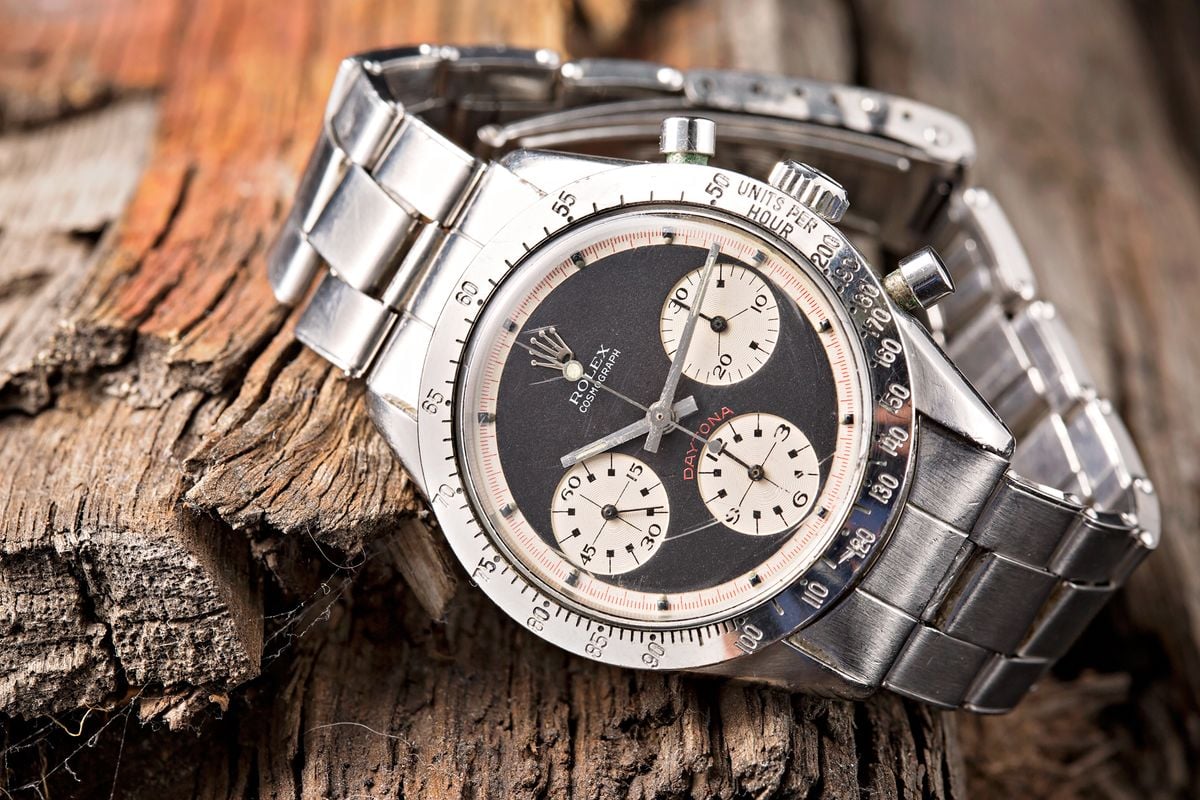
At this point in the early 60s, technology was advancing at breakneck speed. Apart from the battle to be first among the stars, in the more down-to-earth world of horology, rumblings of quartz electronics were starting to be felt from the east. Despite being several years away from the appearance of the first automatic winding chronograph movements, a watch you had to remember to wind yourself was starting to look like a relic of another time. And if you particularly wanted a mechanical chronograph with a hand wound caliber, the ever-present Omega Speedmaster had the market pretty much sewn up. Therefore, the Rolex Daytona lingered on shelves, with dealers allegedly so desperate to unload them they would offer them at heavily discounted prices, or even as a two-for-one deal with the purchase of other, more expensive Rolex watches.
Undeterred, the brand brought out 14k and 18k yellow gold versions of the ref. 6239 in 1965, the same year the Daytona name was finally included on the watch. That was also the time they commissioned dial maker Singer to come up with an alternative to the standard silver and black faces. What they presented was dubbed the ‘Exotic Dial’ and featured an outer minute track in the same color as the sub-dials, crosshairs on the chrono counters, and an Art Deco font for the numerals. Instead of revamping the appeal of the Rolex Daytona, these dials – which we today know as Paul Newman Dials – only managed to make an unpopular watch even less sought after.
The ref. 6239 limped on until 1969, alongside two other models; the ref. 6241, which was practically identical except for the bezel having a black acrylic insert, and the extremely rare ref. 6240, more or less a prototype that brought screw down chronograph buttons in place of the former pump pushers. That was the first example to have ‘Oyster’ on its dial, which indicated its superior water resistance. Periodic improvements followed, with a handful of other references released, until the first generation of the Rolex Daytona came to an end 1988. However, from that point on, things started to look up for Rolex’s chronograph.
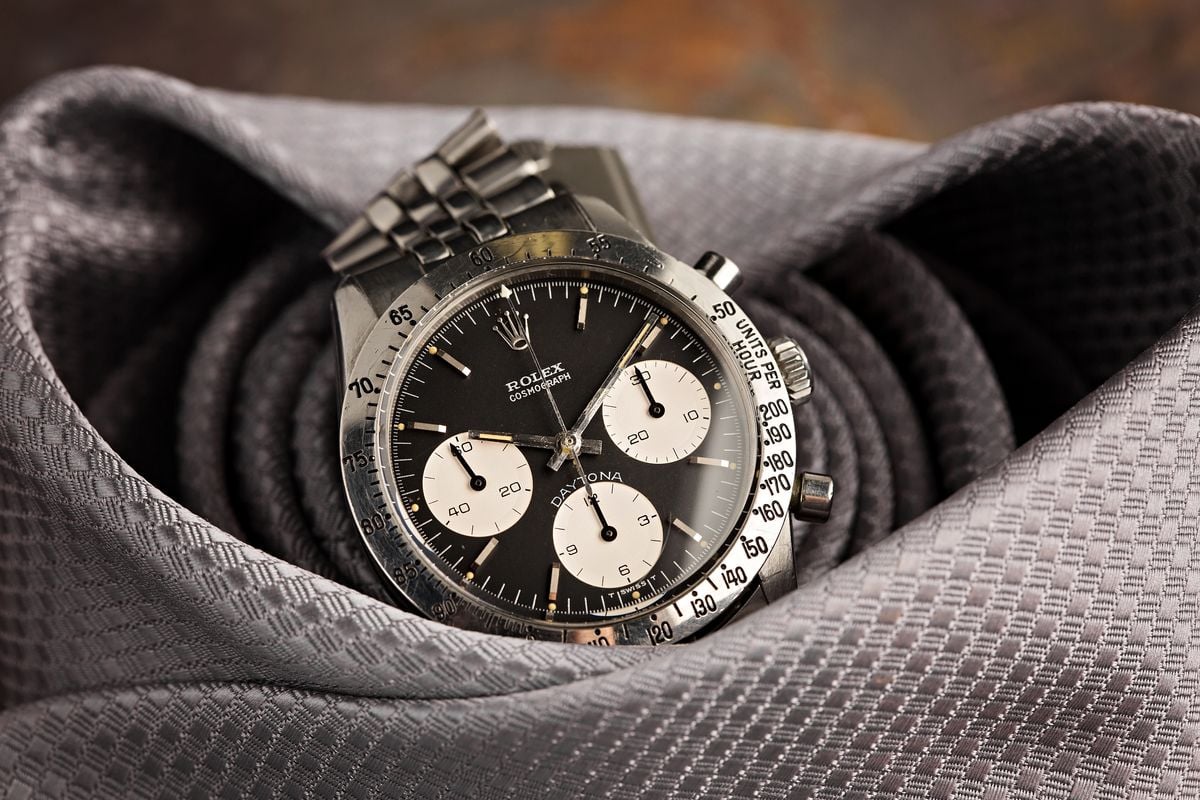
The Modern Rolex Daytona
It was the introduction of an automatic movement that set the Rolex Daytona along the path towards watchmaking superstardom. A self-winding chronograph movement from Zenith, called the El Primero, turned the once ugly duckling of the Rolex catalog into the most coveted watch of the 80s and 90s when it powered the second generation of the piece.
Then, given Rolex’s usual obsession with producing everything in-house that goes into its watches, the brand marked the latest generation by creating its first in-house chronograph movement, the Cal. 4130. The ref. 116XXX series arrived in 2000, and it signaled both the first in-house Rolex chronograph movement, as well as the end of Rolex using movements from third party suppliers in any of their watches.
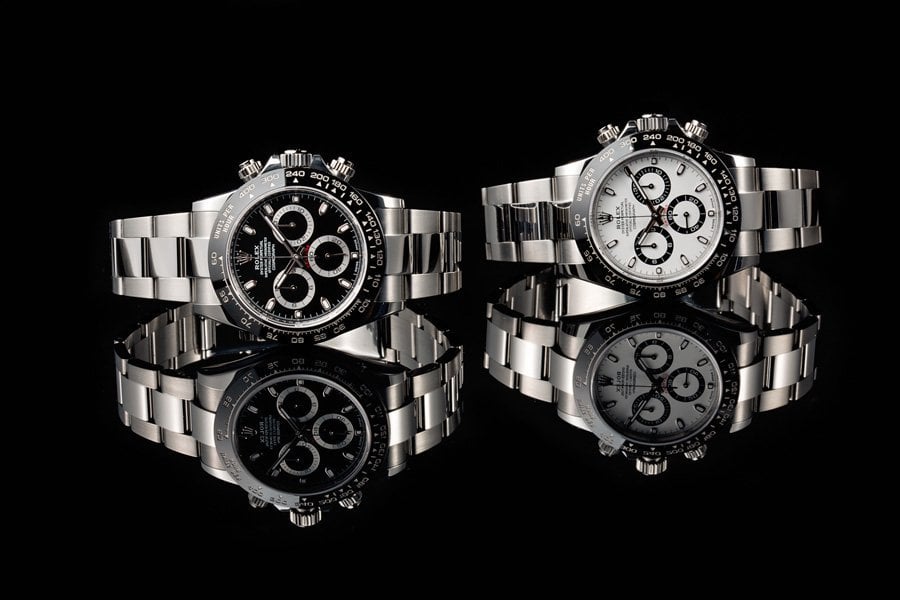
The ref. 116500LN, released in 2016 with either a black or white dial, has been the most talked about and desirable timepiece of recent years. It is now the solitary all-steel model in the Rolex Daytona lineup and is only available with the brand’s patented Cerachrom ceramic bezel. Despite having only one stainless steel model, there are plenty of other flavors of Rolex Daytona watches available.
In fact, it has the broadest range of any of the Professional Collection. Along with the two-tone Rolesor pieces, you can take your pick from any of the three types of gold (yellow, red and white) and even platinum. Dial colors are ample and, since 2017, the Oysterflex rubber strap has also been featured heavily on the gold models with ceramic bezels, giving these references an altogether more sporty aspect.
However, the modern version of the Rolex Daytona is not merely a status symbol. The Cal. 4130, a caliber five-years in the making, is arguably the best mass-produced chronograph movement ever created. It is a column wheel chronograph with a vertical clutch that is made up of just 201 components, a 60% drop from the El Primero that it replaced. It is the sort of minimalist approach Rolex has always embraced; the fewer parts there are, the less there is to go wrong.
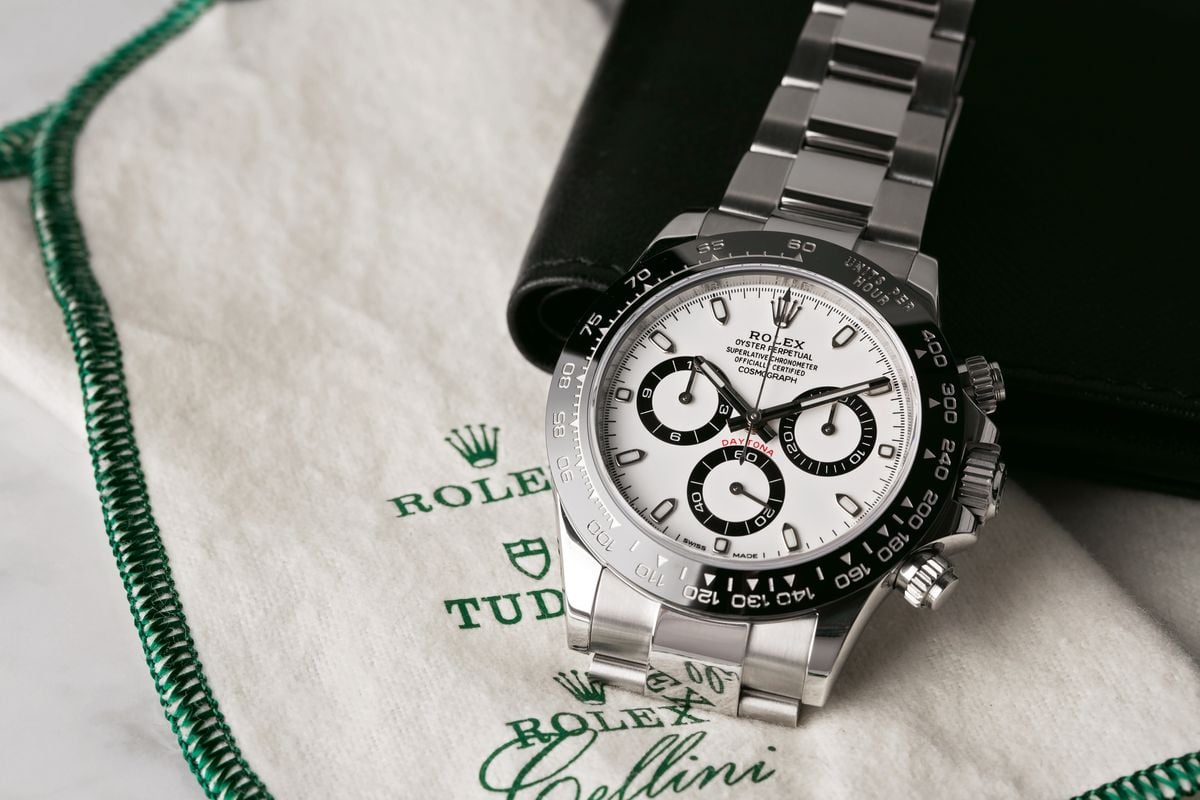
Even so, the new caliber far outperforms the old. Power reserve is increased to 72 hours over the previous 50, the self-winding system is 68% more efficient, and it was the first movement to be given the proprietary Blue Parachrom hairspring, with all its antimagnetic and shock resisting properties.
More importantly, however, is the chronograph coupling assembly. Instead of the traditional lateral, or horizontal, clutch used on previous models, the Cal. 4130 has a vertical system. This means that it is able to perform much more accurate starts and stops, without the juddering backlash on the hands of most rival manufacturers. Additionally, the stopwatch can be run for longer without affecting the overall timekeeping of the watch, and the whole unit is serviceable, in that it can be removed, disassembled, lubricated and replaced, unlike certain other integrated units.
The Rolex Daytona has led an extraordinary life, going from one of the brand’s rare missteps into the very definition of luxury that money can’t buy. A model originally designed to cater to the high octane world of motorsports has now become a sign of wealth, success, and a keen horological eye. Today, both new and vintage examples are becoming evermore valuable – and it is a trend that shows no sign of slowing down.
Do you prefer modern or vintage Rolex Daytona watches? Let us know in the comments below.
